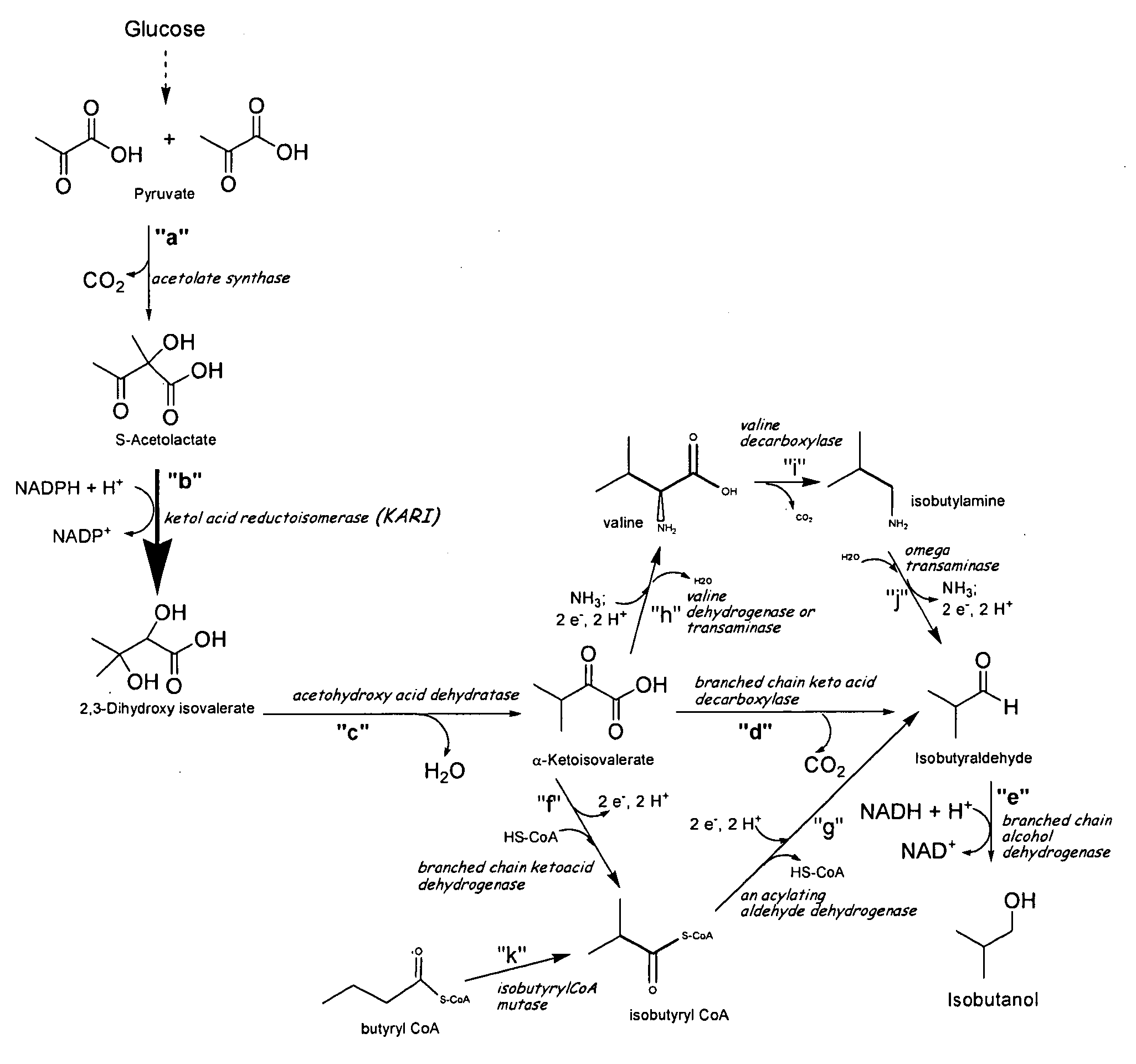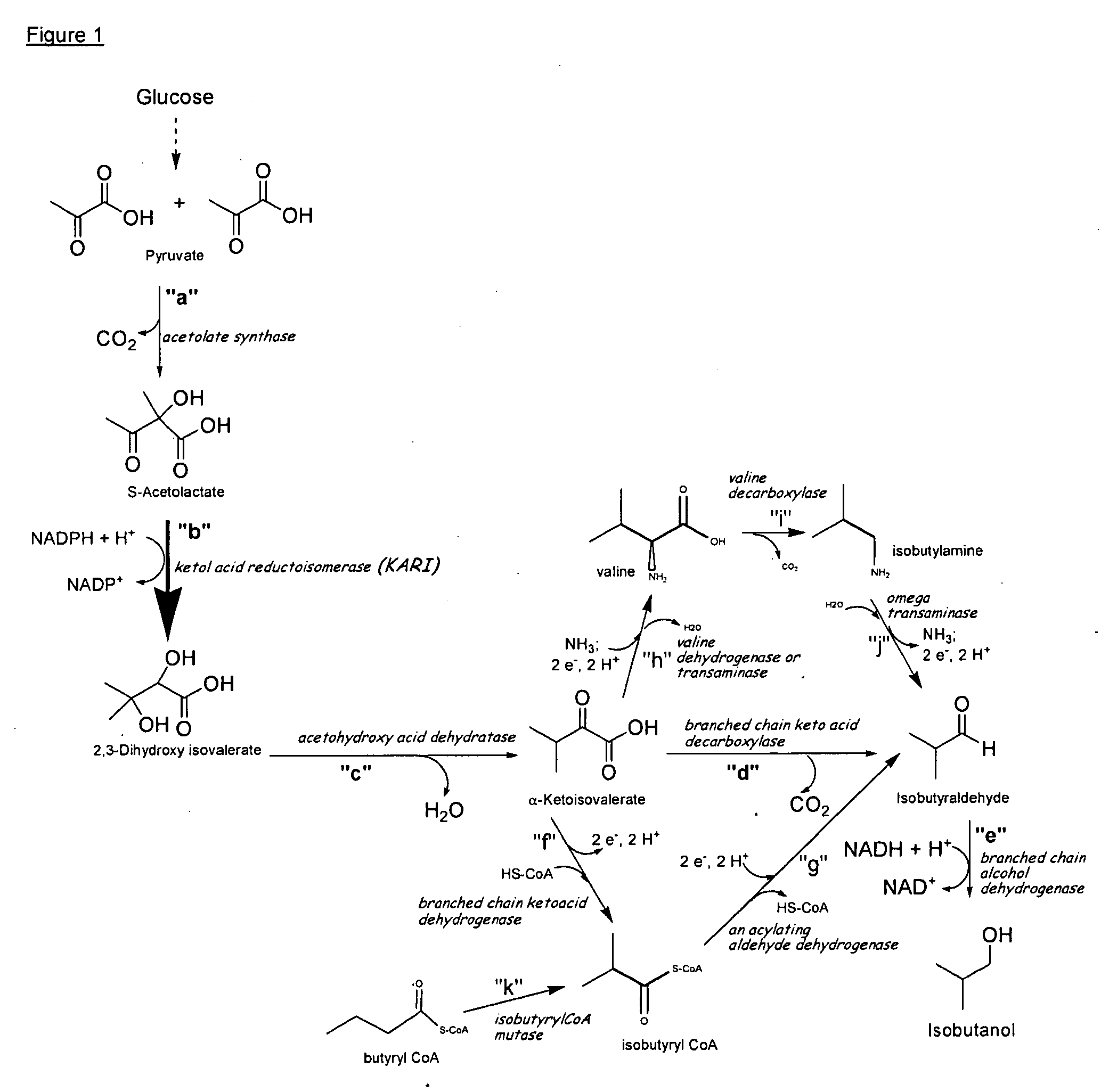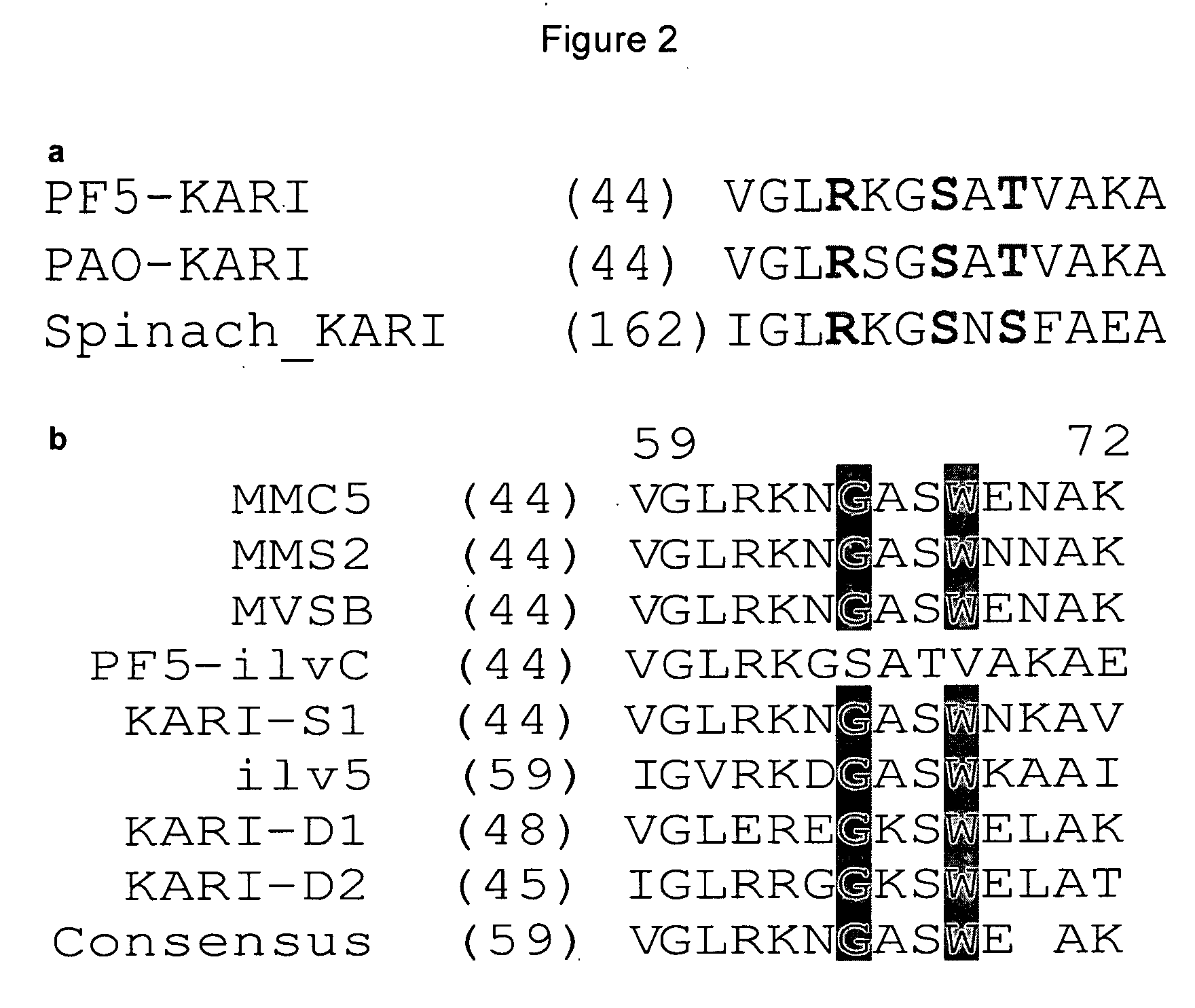Ketol-acid reductoisomerase using nadh
- Summary
- Abstract
- Description
- Claims
- Application Information
AI Technical Summary
Problems solved by technology
Method used
Image
Examples
Example
[0051]Table 9—is a table of the Profile HMM of the KARI enzymes described in Example 5. The eleven positions in the profile HMM representing the columns in the alignment which correspond to the eleven cofactor switching positions in Pseudomonas fluorescens Pf-5 KARI are identified as positions 24, 33, 47, 50, 52, 53, 61, 80, 115, 156, and 170. The lines corresponding to these positions in the model file are highlighted in yellow. Table 9 is submitted herewith electronically and is incorporated herein by reference.
[0052]The following sequences conform with 37 C.F.R. 1.821-1.825 (“Requirements for Patent Applications Containing Nucleotide Sequences and / or Amino Acid Sequence Disclosures—the Sequence Rules”) and are consistent with the World Intellectual Property Organization (WIPO) Standard ST.25 (1998) and the sequence listing requirements of the EPO and PCT (Rules 5.2 and 49.5(a-bis), and Section 208 and Annex C of the Administrative Instructions). The symbols and format used for nu...
Example
Example 1
Construction of Site-Saturation Gene Libraries
[0195]Seven gene libraries were constructed (Table 2) using two steps: 1) synthesis of MegaPrimers using commercially synthesized oligonucleotidies described in Table 1; and 2) construction of mutated genes using the MegaPrimers obtained in step 1. These primers were prepared using high fidelity pfu-ultra polymerase (Stratagene, La Jolla, Calif.) for one pair of primer containing one forward and one reverse primer. The templates for libraries C, E, F, G and H were the wild type of PF5_ilvc. The DNA templates for library N were those mutants having detectable NADH activity from library C while those for library 0 were those mutants having detectable NADH activity from library H. A 50 μl reaction mixture contained: 5.0 μl of 10× reaction buffer supplied with the pfu-ultra polymerase (Stratagene), 1.0 μl of 50 ng / μl template, 1.0 μl each of 10 pmol / μl forward and reverse primers, 1.0 μl of 40 mM dNTP mix (Promega, Madison, Wis.), 1...
Example
Example 2
Construction of Error Prone PCR Libraries
[0198]Several rounds of error prone PCR (epPCR) libraries were created using the GeneMorph II kit (Stratagene) as recommended by the manufacturer. All the epPCR libraries target the N-terminal of PF5—KARI. The forward primer (SED ID No: 20) and the reverse primer (SED ID No: 22) were used for all ePCR libraries.
[0199]The DNA templates for each epPCR library were mutants having relatively good NADH activities from the previous library. For example: the DNA templates for the nth epPCR library were mutants having good NADH activities from the (n-1)th epPCR library. The templates of the first epPCR library were mutants having relatively good NADH activities from libraries N and O. The mutations rate of library made by this kit was controlled by the amount of template added in the reaction mixture and the number of amplification cycles. Typically, 1.0 ng of each DNA template was used in 100 μl of reaction mixture. The number of amplificat...
PUM
 Login to View More
Login to View More Abstract
Description
Claims
Application Information
 Login to View More
Login to View More - R&D
- Intellectual Property
- Life Sciences
- Materials
- Tech Scout
- Unparalleled Data Quality
- Higher Quality Content
- 60% Fewer Hallucinations
Browse by: Latest US Patents, China's latest patents, Technical Efficacy Thesaurus, Application Domain, Technology Topic, Popular Technical Reports.
© 2025 PatSnap. All rights reserved.Legal|Privacy policy|Modern Slavery Act Transparency Statement|Sitemap|About US| Contact US: help@patsnap.com



